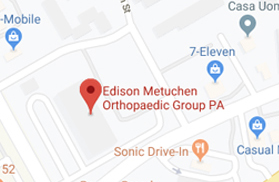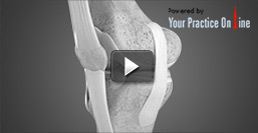Peripheral Nerve Surgery
The human nervous system comprises of the brain, spinal cord, autonomic nervous system, and the peripheral nerves. The peripheral nerves are cord-like structures and are made up of nerve fiber bundles that transmit sensory information from the body parts to the spinal cord. They also send signals from the spinal cord to rest of the body. Peripheral nerves have an inherent capacity for healing and regeneration unlike the brain and spinal cord. Even the most badly injured peripheral nerve will recover completely if repair is done at the right time.
Peripheral Nerve Problems
Peripheral nerve disorders cause symptoms such as burning or tingling sensation, numbness, pain, and muscle weakness. The peripheral nerve problems can be broadly classified into nerve injuries, nerve entrapments and nerve tumors. Peripheral nerve injuries include brachial plexus injuries, nerve compression injuries, and nerve lacerations. Nerve entrapment conditions are Carpel tunnel syndrome, ulnar and peroneal neuropathy. Schwannoma and neurofibroma are examples of nerve tumors.
Indications for Peripheral Nerve Surgery
The goal of peripheral nerve surgery is to restore your motor and sensory nerve functions with minimal pain and disability.
Peripheral nerve surgery might be indicated in the following conditions:
- Peripheral nerve injury that has caused severe weakness or numbness and has not improved with 3 months of conservative treatment.
- Peripheral nerve entrapment syndrome which causes pain that is not relieved with conservative methods.
- Peripheral nerve tumors.
Peripheral Nerve Surgery Techniques
- Nerve Transfers: Nerve transfer is a neurosurgical procedure performed to regain function of paralyzed shoulders and arms. Partial or complete paralysis of arm occurs as a result of brachial plexus injury during motor vehicle accidents. In this procedure, a normal nerve is harvested from its muscle and inserted into the muscle where the nerve is damaged, so that functions of the important muscle are restored.
- Nerve Repair: Surgical repair of the lacerated nerves involves suturing back the cut ends of the nerve. Nerve lacerations occur when a nerve is cut by a sharp object such as glass, metal, or a knife as in cases of stabbing.
- Nerve Graft Repair: Nerve graft repair is the grafting of a nerve at the gap created by excision of a nerve end during surgery. Nerve grafts can be taken from a sensory nerve of another part of the body.
- Nerve Decompression Surgery: This surgical procedure treats peripheral nerve entrapment conditions, if physical therapy and splinting do not improve the condition. It involves division or removal of the structures that compress on the nerves, for example, a bony enlargement due to arthritis or muscle enlargement as a result of overuse. This procedure gives immediate relief from the symptoms, although complete recovery may require several weeks to months.
- Surgical Excision of Nerve Tumors: Surgical excision of nerve tumors involves removal of the benign tumor mass formed within the nerve.
Other Spine List
- Normal Anatomy of the Spine
- Back Pain
- Neck Pain
- Spine Trauma
- Vertebral Fractures
- Spine Injections
- Spinal Deformity Surgery
- Posterior Lumbar Decompression with Fusion
- Lumbar Microdiscectomy
- Spinal Cord Stimulator
- Anterior Cervical Decompression with Fusion
- Corpectomy
- Kyphoplasty
- SI joint fusion
- Oblique Lumbar Interbody Fusion
- Direct Lateral Interbody Fusion
- Interlaminar Lumbar Instrumented Fusion
- Minimal Access Surgical Technology Transforaminal Lumbar Interbody Fusion
- Lumbar Epidural Steroid Injection
- Laminectomy (Cervical) with Fusion
- Posterior Lumbar Interbody Fusion
 Menu
Menu






